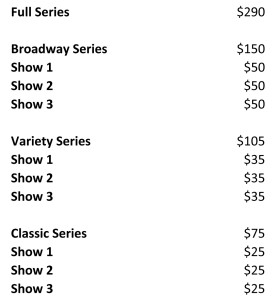We here at Butts In The Seats blog, (okay, me), are not afraid to admit when we may have been wrong. This summer, Elizabeth Schmidt, wrote a piece on Non-Profit Quarterly challenging the myth of the Founders Syndrome.
There have been times in the past when my posts have played into the notion that Founders tend to hold their organizations back in various ways. As Schmidt enumerates:
The label seems to be applied if one or more of the following symptoms are present. The first is a sense of grandiosity—that the organization is the founder’s, and it exists to serve his or her ego (or pocketbook). The second is an inability to delegate—poor management on the part of the founder. The third is an inability to make a smooth transition from the founder to new leadership. And the fourth is an unwavering dedication to the original vision for the organization.
Schmidt makes the common sense observation that you don’t need to be a founder to exhibit these characteristics and gives a few examples of non-founders who have damaged their organizations by manifesting them. She also notes that being normal human beings, not all founders possess these traits, nor do they suddenly become infected with these inclinations upon deciding to found a company.
She notes the inability to plan a smooth leadership transition is so widespread it is more of an organizational failing than attributable to the influence of a single individual.
The worst in Schmidt’s mind seems to be the fourth stereotype of not allowing the organization to evolve beyond the original vision.
“This symptom is particularly disturbing, however, because it has the potential to squelch necessary dialogue among the stakeholders of the organization. To say, as soon as a disagreement arises, that the party who conceived of the initial mission suffers from founder’s syndrome, severely handicaps that party’s standing in the discussion.”
Schmidt acknowledges that there is always some basis in truth to the anecdotes that form these generalizations about founders and it is likely that many organizations have encountered troubles for just these reasons.
However, she points the lack of research providing evidence that this is a particular problem for founders. The only study she found that attempted to collect empirical data concluded that there was ““considerable truth to some of the rumors and stories about founder’s syndrome.” However, Schmidt feels the following data does not support this assertion and is at best, inconclusive.
-Founder-led organizations tended to have smaller budgets.
-Term limits for board members existed in 31 percent of founder-led organizations and 49 percent of non-founder organizations.
-Eighty percent of founder-led organizations held at least quarterly meetings, compared to 87% of non-founder organizations.
-Three-fourths of the respondents in both groups thought either the executive director or the board chair was the most influential person during a board meeting, but founder-led organizations were more likely to say the executive director was the most influential.
-On the other hand, founder-led organizations were more likely to have reviewed the mission in the past year than organizations led by non-founders; they were more likely to attract full board participation at meetings, and they were more likely to set and mail the board agenda ahead of time.
I haven’t read the study she references, but on the face of the data, I would probably lean toward saying non-founder organizations employed better governance practices. Still Schmidt makes a strong argument about resisting the inclination to automatically dismiss a founder as the source of problems for a company and instead evaluate all elements potentially contributing to the organization’s weakness.
